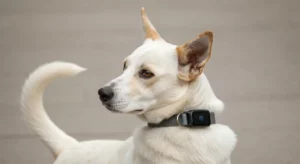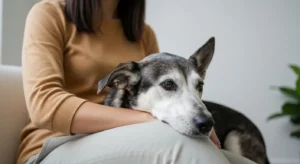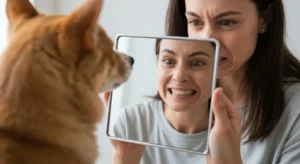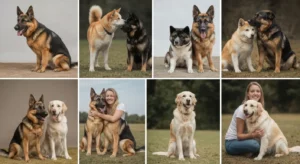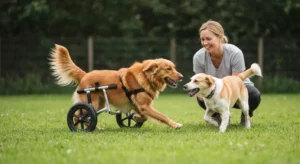I remember the day I brought him home like it was yesterday. He was a tiny Netherland Dwarf, all fluff and twitching nose, huddled in the corner of a cardboard carrier. I named him Clover. In my mind, I had a picture-perfect vision of life with a pet rabbit: a quiet, clean, low-maintenance companion who would happily nibble on carrots in a neat little hutch and occasionally let me cuddle him. He would be the perfect apartment pet—less demanding than a dog, more interactive than a hamster.
I was wrong. So, so wrong.
My journey with Clover wasn’t the easy ride I had envisioned. It was a challenging, expensive, and often frustrating education. But it was also one of the most rewarding experiences of my life, one that transformed me from a naive owner into a passionate advocate. If you’re considering getting a rabbit as a pet, please, let my story be your guide. This is everything I wish someone had told me before I brought that tiny ball of fur into my life.
The Myth of the “Starter Pet” Cage
My first mistake was buying the “Deluxe Rabbit Starter Kit” from the big-box pet store. It came with a small, plastic-bottomed wire cage, a water bottle, a food dish, and a small bag of colorful pellet mix. It seemed perfect. For the first week, Clover seemed to settle in. He’d sleep in the corner and come out for his pellets. I’d let him out for an hour or so in the evenings to hop around the living room under my watchful eye.
Then, the chewing started. Not on the wooden chew toys I’d provided, but on the bars of his cage. He would bite them, rattle them, and pull at them for hours, especially at night. During his “playtime,” his curiosity turned destructive. A phone charger was silently snipped in two. The corner of my favorite antique rug developed a frayed edge. The baseboards behind the sofa looked like they’d been attacked by a tiny, very determined beaver.
I was baffled and frustrated. I thought he was being “bad.” I’d clap my hands and say “No!” which only sent him skittering back under the couch, thumping his foot in annoyance. I felt like a failure. Why wasn’t my “easy” pet behaving? The guilt was immense. He looked miserable in his cage, but he was a menace outside of it. It felt like a no-win situation.
Expert Tip: Rabbits Are Not Cage Animals.
This was my first and most important lesson. The small cages sold in pet stores are what rabbit experts call “cruelty in a kit.” A rabbit needs space to run, jump, and exhibit natural behaviors. A cage should only ever be a “home base”—a safe space where their litter box, hay, and water are located. The ideal setup is a large exercise pen (at least 4×4 feet or larger) or, even better, a fully rabbit-proofed room where they can live freely. Confining a rabbit to a small cage leads to depression, aggression, and destructive behaviors like bar-biting.
Down the Rabbit Hole: A Crash Course in Rabbit Care
My turning point came late one night, after I found Clover had chewed through the power cord for my laptop. I was furious for a moment, and then I just felt a wave of sadness. This wasn’t his fault; it was mine. I was failing to meet his needs because I didn’t understand them. So, I started researching. Really researching.
I ignored the pet store pamphlets and dove into the websites of rescue organizations like the House Rabbit Society. I read veterinary articles. I watched hours of videos from experienced owners. It was like discovering a secret world. I learned that almost everything I thought I knew about having a rabbit as a pet was wrong.
My first action was to schedule an appointment with an “exotics” veterinarian—not just any vet, but one with specific, advanced training in rabbit medicine. This was another thing I wish I’d known from day one: most standard vets have very little training in rabbit physiology, which is incredibly different from that of cats and dogs.
The vet was a godsend. She was kind but direct. She examined Clover, confirmed he was healthy, and then gently explained his behavior. The bar-biting? A sign of boredom and frustration. The wire-chewing? A natural, instinctual behavior. Rabbits’ teeth grow continuously, like fingernails, and they have a deep-seated biological urge to chew to keep them worn down. My tiny chew toys were no match for this primal need.
Then she asked me about his diet. “I give him a scoop of pellets in the morning and evening, and some carrots as treats,” I said proudly. She smiled patiently and gave me the second-most important lecture of my rabbit-owning life.
What I Learned: A Rabbit’s Diet Is 80-90% Hay.
The colorful pellet mixes full of seeds and corn are the equivalent of junk food for rabbits. A proper diet for an adult rabbit as a pet should consist of:
- Unlimited, 24/7 access to high-quality grass hay (like Timothy, Orchard, or Oat hay). This is the cornerstone. It keeps their complex digestive system moving and wears down their teeth naturally.
- A small, measured amount of plain, high-fiber pellets (about 1/4 cup per 5 lbs of body weight).
- A daily serving of fresh, leafy greens (like romaine lettuce, cilantro, and parsley).
- Fruit and sugary vegetables (like carrots) should be very rare treats, as too much sugar can cause serious digestive problems.
Once I transitioned Clover to a proper diet, his desire to chew on inappropriate things dramatically decreased. He was too busy happily munching on hay all day!
Operation: Fort Knox Bunny
Armed with this new knowledge, I declared war on household hazards. My mission: to make my living room a safe, free-roam space for Clover. This process is called “bunny proofing,” and it’s not optional. It’s the single most important thing you can do for your rabbit’s safety and your own sanity.
I got down on my hands and knees and saw the world from his perspective. Suddenly, I saw danger everywhere. The dangling lamp cord was a tempting toy. The gap behind the bookshelf was a dark, chewable cave. The houseplants I loved were potentially toxic.
The project took an entire weekend. I bought rolls of plastic cord protectors and split-loom tubing and painstakingly wrapped every single wire in the room. I used sections of a wire cube storage system (a popular DIY rabbit-proofing tool) to block off the area behind the entertainment center. I checked the ASPCA’s list of toxic plants and moved my snake plant and pothos to a high shelf Clover could never reach. I bought clear corner protectors to stick onto the most tempting wooden furniture legs and baseboards.
When I was done, I replaced his cage with a large exercise pen, filled it with a fresh layer of hay over a soft blanket, put his new, larger litter box in the corner, and left the door open. The change in Clover was immediate and astounding. He cautiously hopped out, nose twitching. He explored the perimeter of the room, sniffing at the covered wires and protected baseboards. Finding nothing interesting to chew, he returned to his pen and started munching on his mountain of hay. Later that evening, for the first time ever, I saw him do a “binky”—a wild, twisting leap into the air. It’s a rabbit’s expression of pure joy, and it brought tears to my eyes.
Expert Tip: Your Ultimate Rabbit-Proofing Checklist.
Think like a bunny. Get low to the ground and scan for these common hazards:
- Electrical Cords: Cover every single one with plastic tubing or flex tubing. A single bite can be fatal.
- Baseboards & Furniture: Protect wooden items with clear corner protectors, bitter apple spray (use with caution), or by physically blocking access.
- Houseplants: Research every plant in your home. Many are toxic to rabbits. Move them out of reach or re-home them.
- Toxic Items: Secure household cleaners, medicines, and human foods.
- Small Gaps: Block off spaces behind and under furniture where a rabbit could get stuck or find hidden wires.
Learning to Speak Rabbit
With the environment safe and his diet corrected, our relationship began to change. I finally understood that Clover wasn’t a pet to be cuddled and controlled; he was a sensitive, intelligent prey animal I needed to earn the trust of. The image of a lap-bunny was replaced by the reality of a ground-dwelling friend.
I stopped trying to pick him up. Rabbits hate having their feet leave the ground, as it makes them feel like they’ve been snatched by a predator. Instead, I would just lie on the floor while watching TV or reading. At first, he ignored me. Then, he started to get curious. He would slowly approach, sniff my hair, and then hop away. I started leaving a tiny piece of parsley near me. Soon, he was hopping into my lap (on his own terms!) to get the treat before hopping off again.
I learned his language. A soft “thump” with a back foot was a warning: “I’m displeased” or “I sense danger.” A “flop” onto his side meant he was completely relaxed and content. A soft grinding of his teeth while I petted his head was a “purr” of happiness. Understanding these signals was the key to our bond. He wasn’t being aloof; he was communicating, and I had finally learned how to listen.
Life with Clover, Redefined
Today, Clover is a different rabbit. He’s a confident, curious, and integral part of my family. He has free reign of the living room and hallway. His “home base” pen is his sanctuary, and he often naps there with the door wide open. He follows me from room to room, nudges my hand for head scratches, and greets me with excited circles around my feet when I come home from work.
Was it easy? No. Getting a rabbit as a pet requires as much, if not more, commitment than getting a cat or dog. It requires specialized vet care, a very specific diet, and a complete re-evaluation of how to make your home safe. They are not low-maintenance, cheap, or “starter” pets.
But the reward is a relationship with a truly remarkable creature. They are quiet but have huge personalities. They are subtle but deeply affectionate once you earn their trust. My journey with Clover was a steep learning curve, but it taught me patience, empathy, and the profound joy of truly understanding and meeting the needs of another living being. And that’s a lesson I wouldn’t trade for anything.




